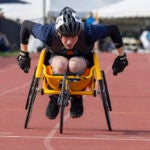MINIMIZING PROBLEMS
Common issues of the hand and upper extremity can be resolved without surgery if treated early.___________________________________
By. Dr. Grady Maddox
Photo Contributed
Hand and upper extremity anatomy is uniquely complex and can lead to a number of painful problems, often unrelated to an actual injury. The most common problems I diagnose in patients are carpal tunnel syndrome, trigger finger, ganglion cyst, tendonitis of the upper extremity and arthritis of the hand and wrist. In most instances, when medical intervention is sought early, these may treated successfully with conservative, nonsurgical approaches.
Trigger finger is a highly common issue that affects tendons in the hand responsible for bending the fingers. Patients often notice that when flexing the digit they are unable to straighten the finger. The goal of treatment is to eliminate the swelling that inhibits the tendon movement. Anti-inflammatory medication is usually the first course of action, and works well for most patients. Another highly effective and non-operative approach is a small steroid injection in the tendon sheath. The success rate after one injection is quite good, and many patient experience permanent relief after just two.
Carpal tunnel syndrome and arthritis are two common ailments that are usually progressive, having a tendency to worsen over time. I encourage patients to see their physician as soon as they start to notice certain signs, such as pain that awakens a patient from sleep, a worsening tendency to drop things, or pain in performing certain daily tasks. Splints that keep the hand in a neutral position work well to relieve pressure on the nerve or bone that causes the pain. Steroid injections can also help to relieve symptoms.
Lastly, ganglion cysts are benign masses found in patients of all ages, often caused by a weakness in a joint capsule or tendon sheath. They tend to slowly grow and can become painful as the size increases. When noticed early, you can work with your physician to monitor these conditions and address them quickly. Many times these cysts will go away on their own, but in some cases they do require aspiration or surgery to remove.
The sooner a patient can be treated in the early stages of these problems, the higher the success rate for nonsurgical treatments. But for some patients, surgery may be a reliable option, consisting of a simple, minimally invasive procedure performed in an outpatient setting such as the St. Vincent’s One Nineteen Outpatient Surgery Center. The Surgery Center at One Nineteen gives you the care you need, when and where you need it.
Dr. Grady Maddox is a hand and upper extremity surgeon at St. Vincent’s One Nineteen, which is a part of Ascension. To learn more about the St. Vincent’s One Nineteen Outpatient Surgery Center, and its wide range of services, visit onenineteen.com.










